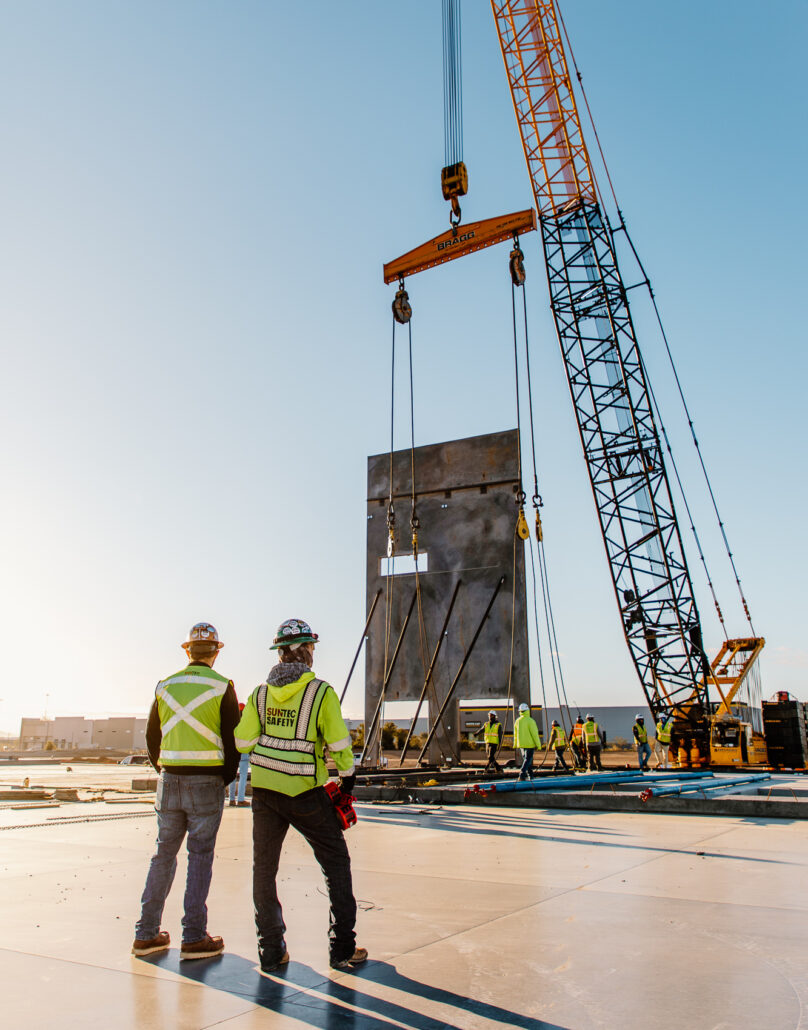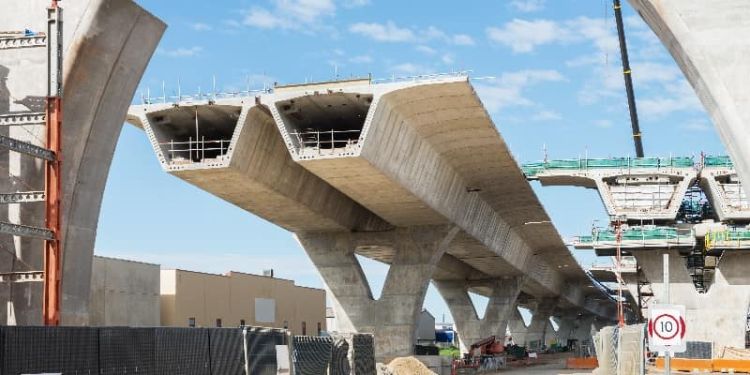Understanding the Various Applications of General Engineering Concrete in Diverse Industries
When you think about the several ways general engineering concrete effects numerous industries, you'll find its applications are both broad and essential. From providing durable foundations for transport networks to sustaining cutting-edge power solutions, this material plays an essential function fit our framework. What about its impact on urban development and environmental engineering? Exploring these facets can reveal much more than you might expect.
The Function of Concrete in Building and Structure Projects
Concrete plays a necessary duty in construction and building projects, making up around 70% of all products made use of in modern-day frameworks. You'll discover it in structures, walls, and floors, providing strength and toughness. When you select concrete, you're choosing a product that can stand up to weather, withstand fire, and support heavy lots. Its convenience enables various applications, from household homes to imposing skyscrapers.Mixing concrete with additives can enhance its buildings, enhancing workability and setting times. You can also mold it into various forms, enabling creativity in layout. As you service your projects, consider the ecological benefits of making use of concrete, such as its capability to decrease power usage in buildings. Generally, concrete's dependability and adaptability make it a keystone of the building industry, making sure that structures are not just functional yet likewise secure and resilient.
Infrastructure Advancement: Roadways, Bridges, and Passages
When it comes to facilities development, roadways, bridges, and passages are vital components that link areas and help with transportation. You rely upon these structures daily, whether you're travelling to work or traveling cross countries. General engineering concrete plays a necessary role in their building and resilience. Its stamina and flexibility allow designers to develop durable roadways that stand up to rush hour and extreme weather conditions.Bridges, commonly spanning rivers and valleys, require specifically created concrete to guarantee security and long life. Making use of strengthened concrete in passage construction not only supports significant weight but also enhances resistance against water seepage and ground motion.

Concrete in Transportation: Enhancing Movement and Safety
As you browse with dynamic cities and rural roads, the function of concrete in transportation comes to be apparent, greatly boosting both wheelchair and safety. Concrete's toughness assurances that roadways, paths, and bridges stand up to rush hour and harsh weather. This long life decreases the demand for frequent fixings, keeping your journeys smooth and reliable.In addition, the layout flexibility of concrete enables innovative frameworks like walkways and tunnels, which successfully reduce congestion and boost traffic flow. You'll see that concrete surfaces additionally provide much better grip, decreasing the possibility of crashes in damp conditions.Moreover, using concrete in trains aids maintain stability and safety and security for trains, making your travels much more effective. Overall, concrete's contributions to transportation not just boost your movement however additionally considerably boost public safety and security, reflecting its crucial role in the infrastructure you depend upon day-to-day.

Power Industry Applications: From Power Plants to Renewable Energy
In the power industry, concrete plays a considerable role in the building and construction and operation of nuclear power plant and sustainable energy setups. You'll find it essential for building tough structures, supports, and control frameworks that stand up to extreme problems. In thermal nuclear power plant, strengthened concrete structures ensure safety and durability versus heats and pressure. West Coast General Engineering commercial concrete Rancho Cucamonga.When it comes to sustainable power, concrete is vital for wind generator bases, solar panel installs, and hydroelectric dams. It gives the stability required to harness power effectively. You may not realize it, yet the concrete used in these applications is specifically created to meet certain efficiency criteria, like toughness and resistance to environmental aspects
Ingenious Concrete Solutions in Environmental Design

The Effect of Concrete on Urban Growth and Landscape Design
Concrete plays a necessary duty fit urban development and landscaping, influencing whatever from facilities durability to aesthetic allure. When you consider cityscapes, concrete frameworks like bridges, roads, and buildings come to mind, offering a tough foundation for city life. You'll discover just how properly designed concrete pathways and plazas enhance public spaces, making them much more inviting and functional.In landscaping, concrete deals versatility, allowing innovative designs for outdoor patios, maintaining wall surfaces, and attractive functions. You can produce special outside rooms that blend perfectly with nature while keeping structural integrity. Additionally, concrete's ability to hold up against climate extremes warranties long life, reducing the demand for frequent repair services.
Future Fads and Advancements in General Engineering Concrete
As urban landscapes advance, the demand for ingenious concrete solutions is driving advancements in basic engineering. You'll notice fads leaning towards green materials and lasting techniques. Researchers are focusing on creating high-performance concrete that minimizes environmental influence without compromising strength.Next-gen ingredients and blends, like recycled aggregates and bio-based products, are acquiring grip, improving sturdiness and reducing carbon footprints. Smart concrete technology is likewise arising, integrating sensing units that keep an eye on structural health and wellness in real-time, permitting positive maintenance.You could find that 3D printing with concrete is coming to be more feasible, enabling complicated layouts and faster building timelines. In addition, the integration of self-healing concrete gets on the surge, guaranteeing durability and reducing repair work prices.
Frequently Asked Concerns
What Are the Ecological Influences of Concrete Production?
Concrete production produces substantial carbon emissions, consumes water, and depletes natural deposits. You can minimize these impacts by exploring sustainable options, maximizing mix layouts, and incorporating recycled materials to decrease your environmental impact and boost sustainability.
Just How Does Concrete Contrast to Various Other Structure Products?
Concrete's sturdiness and stamina usually outperform products like wood and steel. It's versatile, affordable, and energy-efficient, however its environmental effect can be substantial. You'll intend to consider these variables when picking structure materials.
What Are the Different Kinds Of Concrete Available?
There're numerous kinds of concrete available, consisting of requirement, reinforced, high-strength, light-weight, and attractive. Each kind serves specific objectives, so you can select the one that ideal fits your task's needs and needs.
Exactly How Is Concrete Recycled and Reused in Building and construction?
You can recycle concrete by squashing it into accumulation, which you then recycle in new building and construction jobs (West Coast General Engineering concrete foundation). This procedure decreases waste, decreases costs, and lessens the ecological effect of sourcing brand-new products for your builds
What Security Actions Are Needed When Working With Concrete?
When functioning with concrete, you should use from this source safety gear, like gloves and goggles, warranty proper ventilation, and utilize secure lifting methods. Constantly see post adhere to safety guidelines to stop injuries and keep a safe workplace.